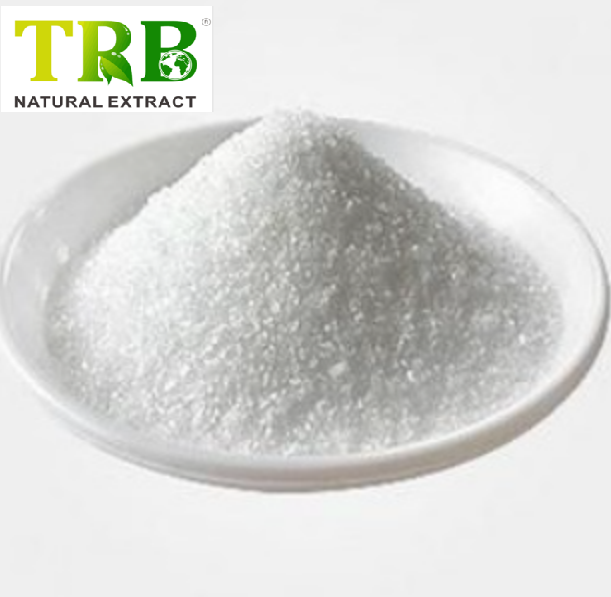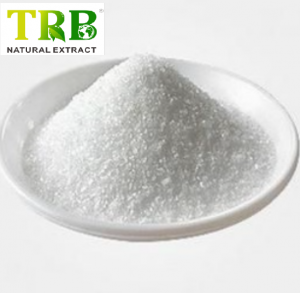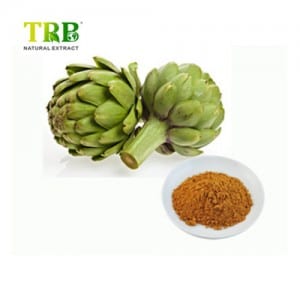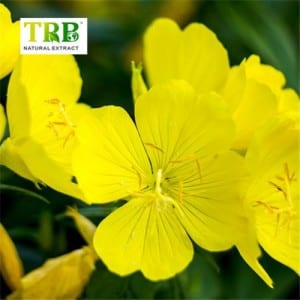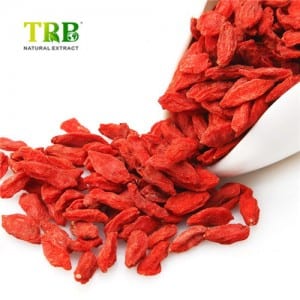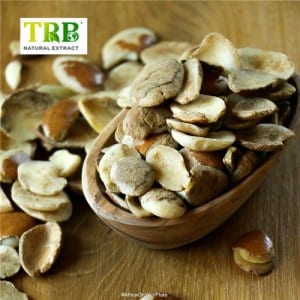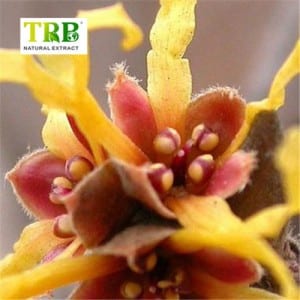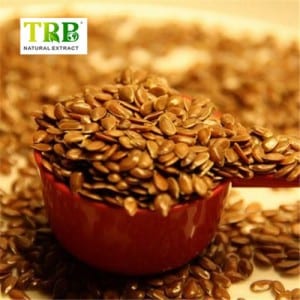Inositol (hexahydroxycyclohexane) is a widely distributed natural constituent of plant and animal tissues. The animal tissues richest in inositol are brain, heart, stomach, kidney, spleen, and liver, where it occurs free or as a component of phospholipids. Among plants, cereals are rich sources of inositol, particularly in the form of polyphosphoric acid esters, called phytic acids. Although there are several possible optically active and inactive isomers, considerations of inositol as a food additive refer specifically to optically inactive cis-1,2,3,5-trans-4,6-cyclohexanehexol, which is preferably designated myo-inositol. Pure inositol is a stable, white, sweet, crystalline compound. The Food Chemicals Codex specifies that it assay not less than 97.0 percent, melt between 224 and 227°, and contain not more than 3 ppm arsenic, 10 ppm lead, 20 ppm heavy metals (as Pb), 60 ppm sulfate, and 50 ppm chloride. Inositol was thought for a time to be a vitamin because experimental animals on a synthetic diet developed clinical signs that were corrected by inositol supplementation. However, no cofactor or catalytic function for inositol has been found; it can be synthesized and occurs in relatively high concentration in animal tissues. These factors argue against its classification as a vitamin. A dietary requirement in man has not been established.
Dzina mankhwala: Inositol
Mfundo: Min 97,0%
Chemical katundu: White galasi kapena crystalline ufa, odorless, ndi wokoma; Wachibale kachulukidwe: 1.752 (anhydrous), 1.524 (dihydrate), MP 225 ~ 227 ℃ (anhydrous), 218 ° C (dihydrate), otentha mfundo 319 ° C. Kusungunuka m'madzi (25 ° C, 14g / 100mL; 60 ° C, 28g / 100mL), pang'ono sungunuka Mowa, asidi acetic, ethylene glycol ndi glycerol, insoluble efa, acetone ndi chloroform. Khola mu mlengalenga; Khola kutenthetsa, acid ndi soda, koma ndi hygroscopic.
CAS No: 87-89-8
Analysis okhutira: molondola kulemera 200 mg nyemba (chisanadze zouma 105 ° C kwa 4h), ndi kuziyika izo mu beaker 250ml. Kuwonjezera 5ml wa osakaniza pakati asidi wina sulfuric njira (TS-241) kuyezetsa ndi 50 acetic anhydride, ndiyeno kuphimba ulonda galasi. Pambuyo Kutentha pa nthunzi kusamba kwa 20min, kuziziritsa pa ayezi kusamba, kuwonjezera madzi 100ml, ndi chithupsa 20min. Pambuyo yozizira, kusamutsa nyemba mu ml 250 kulekanitsa nyuzi ntchito pang'ono madzi. Successively ntchito 30, 25, 20, 15, 10 ndi 5 ml ya chloroform kuchotsa njira yothetsera nthawi sikisi (woyamba tipeŵe ndi beaker). Onse chloroform Tingafinye anali pamodzi yachiwiri 250m1 kulekanitsa nyuzi. Sambani Tingafinye wothira 10ml madzi. Ikani chloroform njira kupyolera nyuzi thonje ubweya ndi kusamutsa kuti ndi 150ml chisanadze kulemedwa Soxhlet botolo. Gwiritsani 10ml wa chloroform kusamba kulekanitsa nyuzi ndi nyuzi, ndipo inalowa mu Tingafinye. Asanduke nthunzi kuti dryness pa kusamba nthunzi, kenako kusamutsa mu ng'anjo pa 105 ° C kwa atayanika 1h. Kuziziritsa mu desiccator, ndipo kulemera izo. Gwiritsani adalandira ndalama za asanu inositol nthochi chulukanani ndi 0,4167, ndicho kuchuluka lolingana wa inositol (C6H12O6).
ntchito:
1. As food supplements, has a similar effect to vitamin B1. It can be used for infant foods and used in an amount of 210~250mg/kg; Used in drinking in an amount of 25~30mg/kg.
2. Inositol is an indispensible vitamin for lipid metabolism in the body. It can promote the absorption of hypolipidemic medicines and vitamins. Moreover, it can promote the cell growth and fat metabolism in liver and other tissues. It can be used for the adjuvant treatment of fatty liver, high cholesterol. It is widely used in food and feed additives, and is often added to fish, shrimp and livestock feed. The amount is 350-500mg/kg.
3. The product is one kind of the complex vitamin B, which can promote cell metabolism, improve the cell nutrient conditions, and can contribute to development, increase appetite, to recuperate. Moreover, it can prevent the accumulation of fat in the liver, and accelerate the process of removing excess fat in heart. It has a similar lipid-chemotactic action as choline, and therefore useful in the treatment of hepatic fatty excessive disease and cirrhosis of the liver disease. According to the “food fortifier use of health standards (1993)” (Issued by the Ministry of Health of China), it can be used for infant food and fortified beverages at an amount of 380-790mg/kg. It is a vitamin class medicines and lipid-lowering drug which promote the fat metabolism of liver and other tissues, and be useful for the adjuvant treatment of fatty liver and high cholesterol. It is widely used in additives of food and beverage.
4. Inositol is widely used in pharmaceutical, chemical, food, etc. It has a good effect on treating diseases such as liver cirrhosis. It can also used for advanced cosmetic raw materials, with high economic value.
5. It can be used as a biochemical reagent and also for the pharmaceutical and organic synthesis; It can lower the level cholesterol and have sedative effect.
|
Zambiri za TRB |
||
| R egulation chitsimikizo | ||
| USFDA, CEP, Kosher HALAL GMP ISO Zikalata | ||
| odalirika Quality | ||
| Pafupifupi zaka 20, katundu m'mayiko 40 ndipo m'madera oposa 2000 magulu umatulutsa TRB alibe vuto lililonse quality, wapadera ndondomeko kuyeretsedwa uchimo ndi ulamuliro chiyero kudzakhalire USP, EP ndi CP | ||
| Mabuku Quality System | ||
|
|
▲ Quality Chitsimikizo System |
√ |
| ▲ choyenera ulamuliro |
√ |
|
| ▲ kutsimikiza System |
√ |
|
| ▲ Training System |
√ |
|
| ▲ Internal Protocol kafukufuku |
√ |
|
| ▲ Suppler kafukufuku System |
√ |
|
| ▲ Zida Facilities System |
√ |
|
| ▲ Zofunika Control System |
√ |
|
| ▲ Yopanga Control System |
√ |
|
| ▲ Kenaka olemba System |
√ |
|
| ▲ Laboratory Control System |
√ |
|
| ▲ Yotsimikiza kutsimikiza System |
√ |
|
| ▲ zolimbana Affairs System |
√ |
|
| Control Lonse Sources MASANKO | ||
| Mosamalitsa ankalamulira zonse zopangira, Chalk ndi ma CD materials.Preferred zipangizo ndi Chalk ndi zipangizo ma CD yaiwisi katundu ndi US DMF number.Several ogulitsa zipangizo monga kotunga chitsimikizo. | ||
| Amphamvu Mabungwe Cooperative kuthandiza | ||
| Institute of zomera / Institution ya tizilombo tosaoneka ndi maso / Academy of Science and Technology / University | ||
